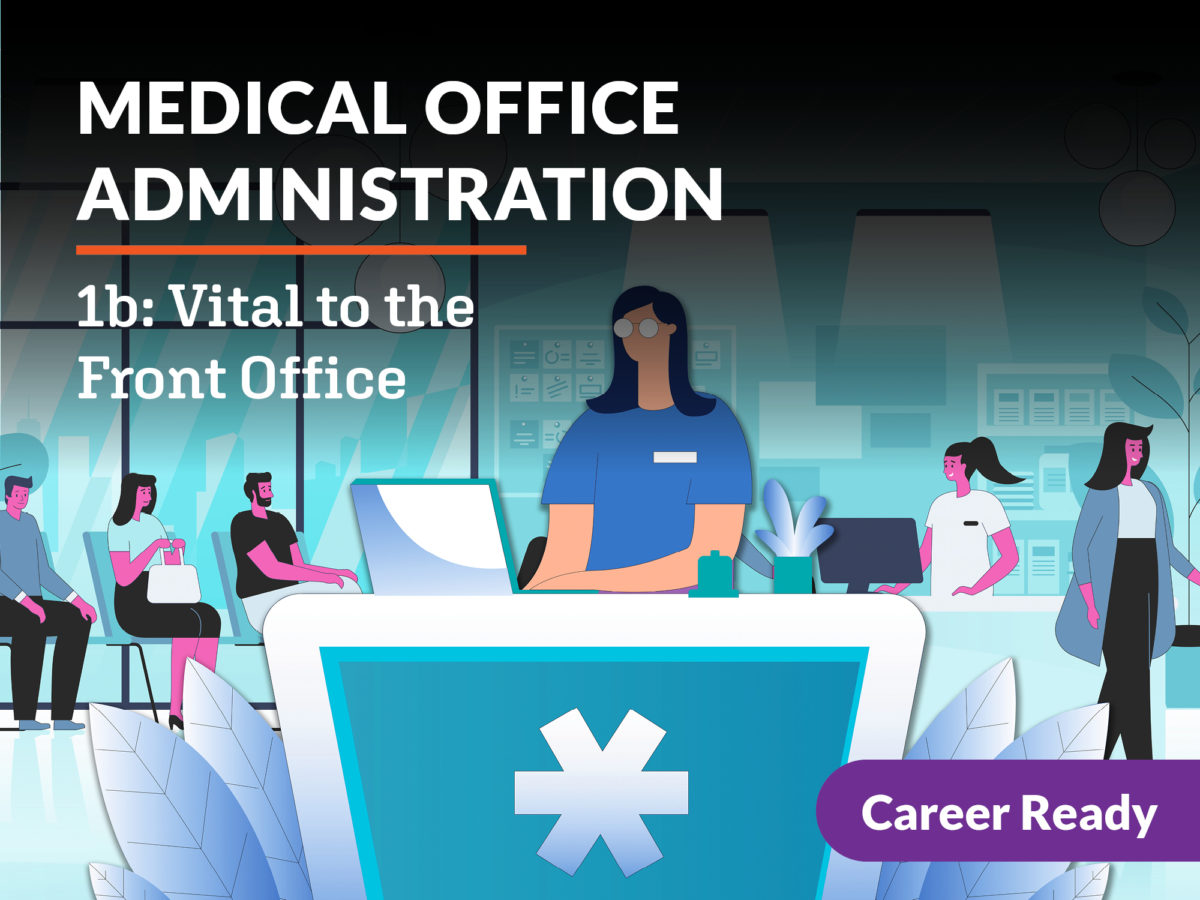Medical Administration Programs: What to Look for in a Top quality Training course
Medical Administration Programs: What to Look for in a Top quality Training course
Blog Article
Ideal Practices in Medical Management for Improving Efficiency and Decreasing Expenses
In the ever-evolving landscape of health care, the search of finest methods in clinical management is extremely important for boosting efficiency and curbing expenses. By incorporating sophisticated modern technologies such as digital wellness documents and telemedicine, healthcare service providers can streamline operations and boost individual treatment. Technology alone is not a cure all; enhancing resource appropriation and promoting collective communication among treatment teams are equally essential. As organizations strive to stabilize top quality and price, what methods should be focused on to achieve these twin goals? The solution to these questions hold the trick to a more sustainable medical care system.
Leveraging Advanced Modern Technology
In today's swiftly progressing medical care landscape, leveraging sophisticated modern technology is no more optional yet crucial for efficient clinical management. The combination of digital services into medical care systems has actually transformed the method centers run, simplifying processes and enhancing client care. Electronic Wellness Records (EHRs) are critical, providing comprehensive patient data that can be accessed immediately by licensed employees, thus minimizing redundancy and minimizing mistakes. By streamlining person info, EHRs get rid of the demand for troublesome paperwork and assist in smooth communication among health care providers.
Telemedicine is another technological improvement that has actually transformed individual communication. It offers convenience for both clients and health care professionals by enabling remote assessments, which can lower the need for in-person brows through and enhance visit scheduling. Additionally, telehealth platforms can expand healthcare access to country or underserved areas, connecting voids in care shipment.
In addition, the use of Expert system (AI) and machine discovering is ending up being progressively prevalent in predictive analytics, allowing for very early discovery of prospective health and wellness issues and more informed decision-making. These technologies, when integrated successfully, can enhance diagnostic precision and customize person treatment strategies, ultimately bring about improved health care end results and operational performance.
Optimizing Resource Allotment
Efficient source allotment is essential for making best use of the efficiency of medical management. By strategically managing sources such as personnel, equipment, and financial resources, health care facilities can considerably enhance their operational efficiency, boost patient end results, and decrease unnecessary expenditures. The primary step in enhancing source appropriation entails performing a comprehensive assessment of present assets and recognizing locations where resources might be underutilized or exhausted. This assessment should be data-driven, using metrics and analytics to notify decision-making processes.
Focusing on source allowance based upon patient demands and solution demands is important. This involves straightening resources with high-demand areas, such as emergency treatment or specialized therapies, to make sure prompt and effective patient treatment. Carrying out adaptable staffing versions can likewise optimize labor sources by adjusting workers appropriation in action to changing patient volumes. In addition, welcoming telemedicine and other technological options can ease physical source restrictions by offering different avenues for patient-provider communications.
Funds should be meticulously checked and allocated with strategic insight to support both temporary functional needs and long-lasting institutional objectives. This includes investing in training programs that enhance team expertises and taking on energy-efficient discover this practices that minimize operational prices (medical administration). Inevitably, an optimized resource appropriation technique promotes a lasting health care environment that is receptive, effective, and financially sensible
Streamlining Workflow Procedures
When health care centers goal to improve operational performance, enhancing process procedures comes to be a crucial focus. Reliable operations lessen redundancy, get rid of unnecessary steps, and boost sychronisation among health care experts. This approach not only speeds up solution shipment yet likewise improves the top quality of client treatment.

Next, modern technology combination plays a considerable function in streamlining operations. Carrying out digital health records Get More Info (EHRs) and digital medical professional order entrance (CPOE) systems reduces paperwork, lessens human error, and makes certain info is accessible to all pertinent employees. Furthermore, leveraging telemedicine platforms can improve individual consultations and follow-ups, reducing the pressure on physical infrastructure.

Ultimately, structured process bring about set you back decreases and boosted person contentment, promoting a more sustainable medical care atmosphere.
Enhancing Information Administration
Structure upon streamlined process, enhancing data administration comes to be a vital component in advancing healthcare administration. Reliable information monitoring systems are important for keeping exact client records, enhancing decision-making, and guaranteeing try this conformity with governing criteria. By executing robust information administration options, medical care centers can improve the high quality of person treatment while concurrently reducing operational prices.
One secret aspect of enhancing data administration is the assimilation of advanced digital health and wellness document (EHR) systems. These systems assist in the seamless exchange of patient info throughout various divisions, reducing duplication of tests and lessening mistakes. A well-designed EHR system supports data analytics, enabling doctor to identify patterns and make educated decisions pertaining to person care.
Moreover, guarding patient information is extremely important. Embracing comprehensive cybersecurity measures, including encryption and regular audits, makes certain the honesty and privacy of delicate information. This not only secures patients but likewise maintains the establishment's online reputation.
Investing in personnel training is one more essential factor. Enlightening healthcare experts on data administration practices enhances their ability to effectively utilize modern technology, leading to improved individual results. Finally, improving data monitoring via advanced modern technology and thorough training is necessary for attaining performance and cost reduction in clinical management.
Fostering Collaborative Communication
An essential part beforehand clinical administration is fostering collaborative interaction among medical care experts. Efficient interaction is paramount for guaranteeing smooth client treatment, enhancing therapy end results, and reducing errors. By urging open discussion and coordination across multidisciplinary groups, health care organizations can boost their operational efficiency and decrease unneeded prices.
Central to this method is the integration of interaction modern technologies such as digital health and wellness documents (EHRs) and secure messaging systems, which assist in the quick exchange of vital person info. These devices allow medical care companies to accessibility and share information in actual time, ensuring that all employee are educated and lined up in their decision-making processes. Moreover, regular group meetings and interdisciplinary rounds can further advertise a culture of cooperation and responsibility.
Educating programs concentrated on boosting interaction abilities are also essential. These programs can help staff create the capacity to communicate details plainly and pay attention proactively, therefore minimizing misconceptions and cultivating a helpful work setting. On top of that, adopting standard interaction methods, such as SBAR (Circumstance, Background, Analysis, Referral), can simplify the exchange of information, guaranteeing that vital information are shared succinctly and effectively. Eventually, cultivating joint interaction causes boosted health care shipment and expense financial savings (medical administration).

Verdict
Integrating advanced innovation, such as electronic health documents and telemedicine, together with optimized resource allotment and streamlined operations processes, is vital for improving effectiveness in medical administration. Reliable information monitoring and cultivating collective communication among healthcare groups are crucial for reducing redundancies and boosting treatment quality. By focusing on preventative treatment and taking part in high quality renovation initiatives, health care organizations can accomplish significant expense financial savings and improved client outcomes, therefore making certain sustainable medical care distribution in a significantly complicated setting.
Report this page